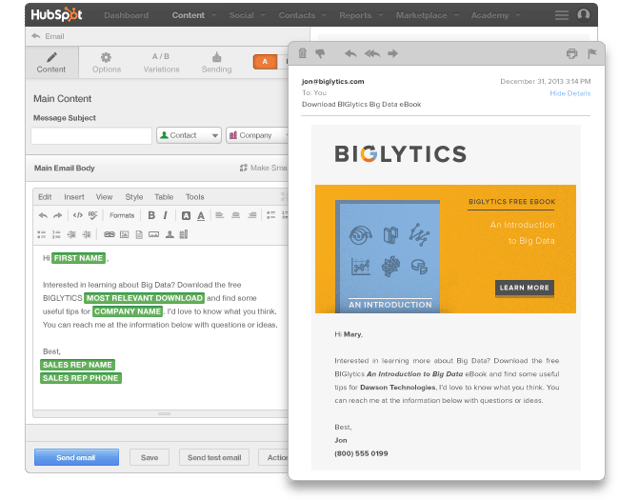6 Ways to Boost Consumer Trust Before the Holidays

Holiday ecommerce sales grew 9.3 percent to reach 95.7 billion in 2013, which is a pretty big increase despite some high profile security breaches putting a damper on consumer trust.
To gain both consumer trust and dollars during 2014's holiday season, merchants should be working toward building better relationships and experiences with their customers now. After all, Black Friday is already less than four months away. In order to increase conversions during the busiest time of the year, merchants need to focus on boosting consumer confidence with the six strategies below:
1. Build relationships.
In the physical world, building a strong relationship requires continuous nurturing, and the digital world is no different. That said, it can be difficult for merchants to establish an ongoing relationship with thousands of digital customers. This is where email comes into play.
One of the best ways for merchants to keep their brand top of mind is by maintaining a presence in their subscribers' inboxes. To increase consumer confidence and obtain a better return on investment, merchants should focus on creating personalized campaigns for their subscribers. In fact, Experian Marketing Services' 2013 Email Market Study reveals that personalized messages have a significant higher open rate when compared to non-personalized messages.
To achieve personalization within the inbox, merchants can leverage a platform like HubSpot, which integrates with lead generation tools as well as offers personalization features and marketing automation so marketers can ensure each message is personalized based on the recipient. In fact, with HubSpot, marketers can segment their lists and dynamically change email content like images, text and CTAs based on recipients' past behavior and patterned interests.

2. Offer social proof.
If your consumers are lacking confidence in your brand, try offering social proof as a way to instill trust. This can be as simple as including a review section on your website through a provider like bazaarvoice or Power Reviews (now owned by Viewpoints).
To spice things up a bit, merchants can also incorporate video and social reviews into their sites. For example, platforms like Bravo or Authntk can be leveraged to feature consumer video reviews directly on a retailer's website, and are typically more influential because consumers can actually see the people who are giving the review. Conversely, a solution like GetKudos is simple to integrate and enables merchants to collect reviews from social networks and feature them on their ecommerce sites. With this widget, merchants can boost consumer confidence with authentic reviews from real people on social networks.

3. Show you are trustworthy.
The best way to highlight your business's trustworthiness is by displaying trust symbols on your site, especially the checkout pages. Trust symbols from security companies like VeriSign or TrustE, for example, can reduce consumer hesitation and increase conversions. This is because these symbols show consumers that the business that they are considering making a purchase from complies with industry standards and takes both security and privacy seriously.

4. Be helpful.
It can be difficult to make purchasing decisions online, as shoppers don't have the ability to try on or touch the items they are considering buying. Merchants, however, can ease consumers' decision process by offering robust product descriptions and advanced technology like virtual fitting rooms on their websites. After all, the more product details presented to a customer, the more confidence the customer will have in their decision.
For example, in addition to including unique and robust descriptions for each item on a website (complete with data like size, color, texture, etc.), apparel merchants can include sizing charts to help consumers choose the correct items. To make consumers even more confident in their decisions, merchants can also integrate virtual fitting room technology into their ecommerce sites. Take Nordstrom as an example. Not only does the retailer offer a size chart and "fit information" from other customers on its product pages, but it also offers Shoefitr and True Fit technology. Shoefitr, for instance, uses a database of footwear to help consumers find the correct size shoes when shopping online. Conversely, TrueFit allows online shoppers to see how items will fit in key body areas, as well as enables shoppers to create profiles that retailers can leverage to deliver personalized shopping experiences.

5. Build authority.
One sure fire way that any Web professional can increase trust is by building authority within their niche. Ecommerce merchants can do this by blogging and being transparent in their "About" section. Plus, blogging has other benefits too, as it is likely to drive website traffic and boost a website's ranking in the search results.
Take eco-friendly retailer Seventh Generation as an example. This retailer has created an online community around sustainable products and lifestyles, and this is represented not only through the items the retailer sells, but also on the company's website within its "Mission" and "Blog" sections. While the Mission section is very straightforward in letting visitors know the purpose of the company, the Seventh Generation blog is full of content that current and future consumers can enjoy. The blog is updated quite frequently, addresses a variety of hot topics within Seventh Generation's eco-friendly niche and features guest bloggers. By creating a steady stream of content, Seventh Generation is establishing a relationship with its readers, which makes the company more trustworthy and will make consumers more likely to make purchases from the company in the future.
For merchants who have not started blogging yet, the first step is to create a content calendar. Although this can be done the old fashion way (read Website Magazine's How to Create an Editorial Calendar), merchants can also leverage a solution like Visually Campaigns. This solution, which was launched in June, automates the process of creating a content strategy. Users simply need to fill out a creative brief in order to have a certified creative director from the Visually Marketplace prepare a custom content package that can include a mix of infographics, videos, presentations, reports and interactive Web experiences.

6. Be transparent.
Lastly, but certainly not least, merchants can ease consumer concern by outlining their return policies on their website. In doing so, consumers will be aware of any possible return restrictions, which will make them more confident in their purchasing decision. This step is especially important leading up to the holidays, as most shoppers are purchasing gifts and will be unlikely to complete the purchase if they are unaware of the merchant's return policy. That being said, merchants should also consider loosening their return policies leading up to the holidays, as early bird shoppers (consumers who make purchases before Black Friday) will turn to the competition if a return policy is too restrictive.









